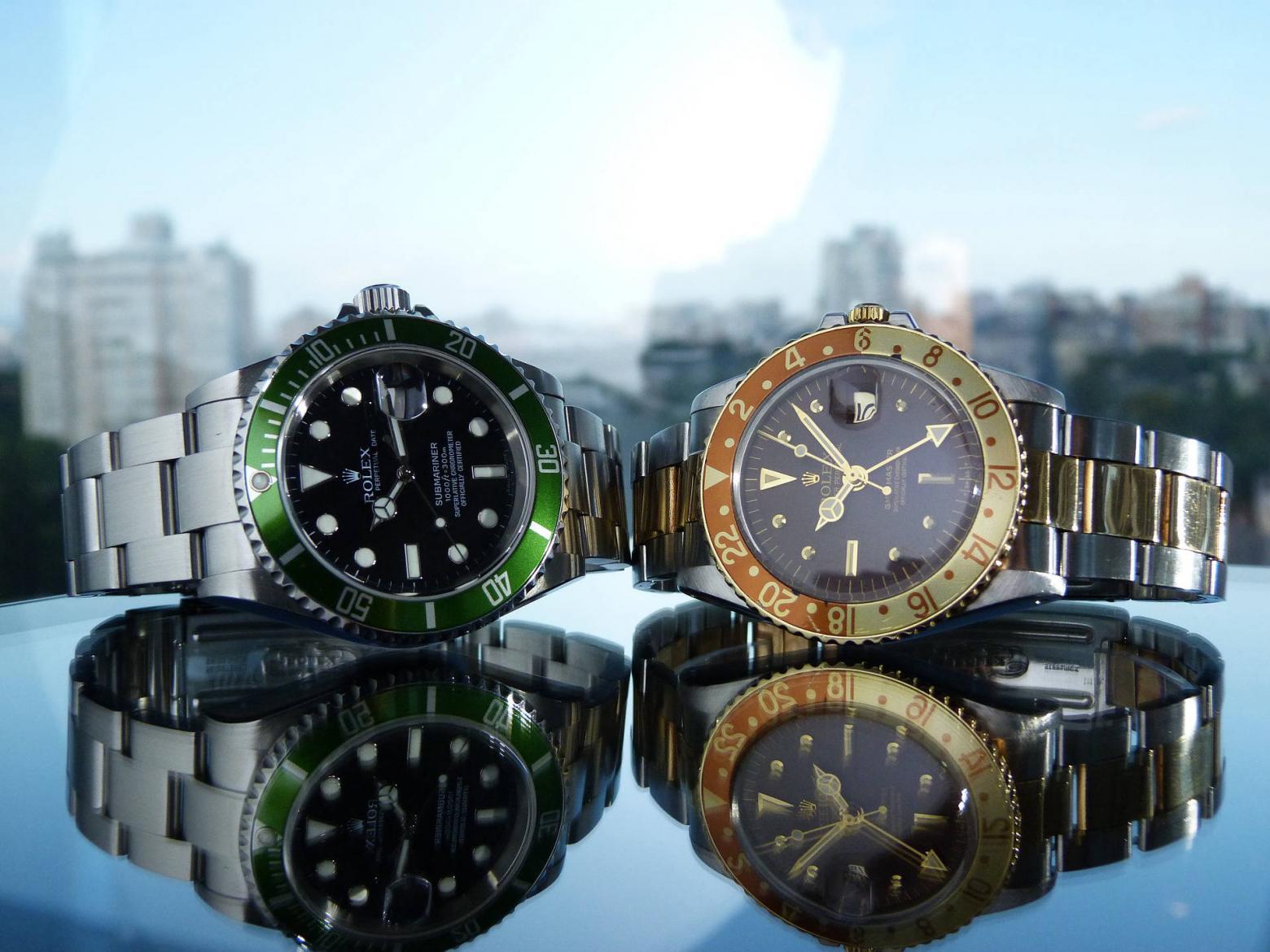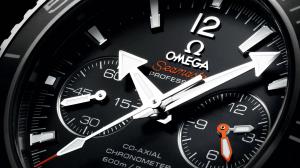What Are The Different Types Of Crystals In Rolex Watches?

When you purchase a Rolex watch, you are getting more than a piece that tells the time. In fact, you are making an investment that, with proper care, should last a lifetime. Rolex watches are some of the most highly sought-after around. The brand name is now even a byword for quality, luxury, and timeless elegance.
One common question asked by watch lovers is: “how come Rolex watches are so widely loved by many?” Well, this is quite a complicated question because, as you might expect, there is a multitude of reasons.
Aside from the obvious aesthetic beauty of these watches, which are possessive of a truly classic design, there’s also the incredible micro-engineering that goes into producing each piece.

The third reason Rolex watches are seen as the industry standard in many ways is due to their supreme quality. Not only are they handmade by highly skilled experts but these items are created using the highest quality materials available.
This means precious metals of the top order, conditioned for durability and polished for effect. The types of crystals used on a Rolex watch face are also a particularly interesting facet of the item.
In this article, we will take a deeper look at the different types of crystals used in Rolex watches, both acrylic and sapphire. We will examine the key elements of each material as well as the pros and cons of each. In addition, we will compare the two before making a final conclusion on which is the more desirable material.
So, without further ado, let’s take an in-depth look at the first kind of Rolex watch crystal.
Acrylic Crystal
In 1991, Rolex exclusively used acrylic crystal in the construction of its watch face. This was done for a variety of reasons. But the main reason was due to its incredible durability.
This is an essential feature for any watch face material because watches may frequently bang or knock into a variety of everyday objects. Such things put it at risk for cracks if not for the acrylic crystal.
Pros
Another key feature of the acrylic crystal is the fact that it is incredibly easy to buff and polish, creating a near-constant impression of crystal clarity on the watch face. Of course, this is essential for style-conscious watch lovers.
Perhaps the least appreciated of the acrylic’s three major advantages is the fact that it will not shatter, meaning that the inside of the watch will not be damaged, if ever, the watch face is broken.
Cons
One of the main problems with acrylic crystal is that while it does not shatter, is that it does scratch fairly easily. This implies that high-quality watches can lose some lustre with everyday wear. In addition, the acrylic crystal used in some Rolex watches needs to be replaced after time to maintain the waterproof sealing on the watch.
Verdict
All in all, acrylic crystal watch faces are beneficial due to their durability and ease of polishing. However, the main drawback of this material is the fact that it scratches extremely easily and needs replacing fairly regularly.

Sapphire Crystal
Pros
Brilliantly clear, highly durable, and scratch-resistant, a sapphire crystal might just be the ideal material to use when constructing the outer casing of a watch face.
This is probably why, by the early ’90s, Rolex had begun exclusively using this material in the construction of their watch faces.
Cons
Whilst this long list of benefits might be alluring to potential buyers of a Rolex watch, it is also important to be aware of the negative side of sapphire crystal watch faces. Firstly, a watch made with sapphire crystal, although tough, is prone to shattering.
Whilst this is an inconvenience in itself, there may be more serious consequences to this happening, with shards of the material damaging the inner workings of the watch quite significantly. This will raise the possibility of extremely costly repairs and, in the worst cases, complete ruination of the timepiece.
Verdict
Whilst this is quite a daunting prospect indeed, the benefits of sapphire crystal watch faces are probably more numerous than the disadvantages.
For this reason, Rolex now exclusively uses this type of crystal in their watch faces. In fact, the 1991 Oyster Perpetual is the very last Rolex to have used acrylic crystal in the construction of the watch face.
Acrylic Crystal vs. Sapphire Crystal: Which of these two types of crystals is better?
Although Rolex now only makes use of sapphire crystal in the construction of their globally renowned watches, it is a matter of personal choice when it comes to finding the answer to this question.
Whilst acrylic crystal is prone to scratching and sapphire is not, one advantage that it does have is the fact that it does not shatter when broken. This means that acrylic crystal may well be a better choice for those looking to purchase a Rolex to use during physical pursuits such as hunting and other outdoor activities.
The inner workings of the watch are less likely to break, therefore avoiding potentially pricey repairs or complete breakdown. However, acrylic crystal is not as suitable as sapphire for underwater activities such as diving, swimming, or snorkelling because it is more likely to lose its waterproofness over time, making replacement a frequent recommendation.
Indeed, it must be said that sapphire crystal is widely preferred today for creating watch face cases. This is due to the material’s extreme clarity, durability, and scratch resistance.
In addition, you won’t need to spend much on replacements to maintain its waterproofness, unlike an acrylic crystal watch. As a result, sapphire crystal is the preferred watch face material to use for underwater activities such as diving, swimming, snorkelling, and more.
Although a sapphire crystal has a tendency to shatter, the likelihood of this actually occurring is minimal. The sapphire crystal is an extremely tough and durable material. In fact, scientific tests proved that a diamond is the only other material tougher than a sapphire crystal. Thus, it is a wonderful option for Rolex watch face casings.
The Final Answer…
So, the question remains: which is better, acrylic or crystal? The answer is, in our opinion, quite clear. Whilst acrylic may be a better option for physical pursuits in which the watch face may break, sapphire crystal beats the acrylic in just about every other category. Not only is it clearer, more durable, and less prone to scratching, but it is also more water-resistant.
It’s no surprise then, that Rolex today exclusively uses sapphire crystal in the construction of their watches. Another reason for this is that sapphire crystal is significantly thinner than its acrylic counterpart.
This creates a more pleasing overall image for the timepiece and matches up well with the brand’s reputation as a creator of slick watches that are both classic and modern in their elegance.
Final Thoughts On The Two Types of Crystals Used In Rolex Watch Faces

As we have discussed, sapphire crystal watch faces are generally much better than the now outmoded acrylic watch face casing. But like we said, it all boils down to personal style and preference when it comes to choosing the best types of crystals for your preferred watch.
However, for those seeking an acrylic watch face, you will only have secondhand Rolex watches to choose from. The brand ceased to use acrylic watch faces in the early 1990s. So, any watch using acrylic will be from before this era.
Although this material is considered inferior, watches using acrylic crystal can sell for extremely high prices at an auction. Online retailers may also sell them at a higher price because of their vintage or antique status.
Whilst purchasing a Rolex watch from a bygone era can be an exciting concept, you should remember that antique and vintage timepieces can be extremely fragile and should be worn with great care. Indeed, in many cases, they should not be worn at all.
Materials used by watchmakers before were neither as durable nor as high quality as those used in the modern age. What’s more, wear and tear over the years can make older items extremely fragile. With that said, if you do want a Rolex piece with an acrylic crystal, you should look at used Rolex catalogues.
So, which of these two types of crystals is more preferable in your opinion?


